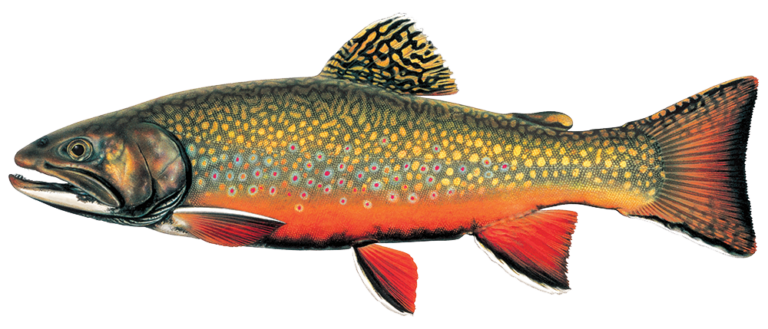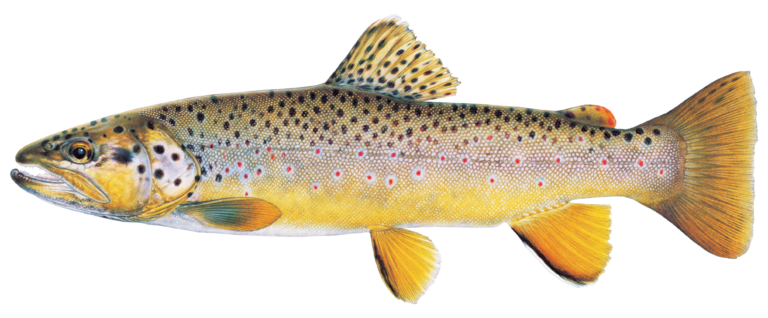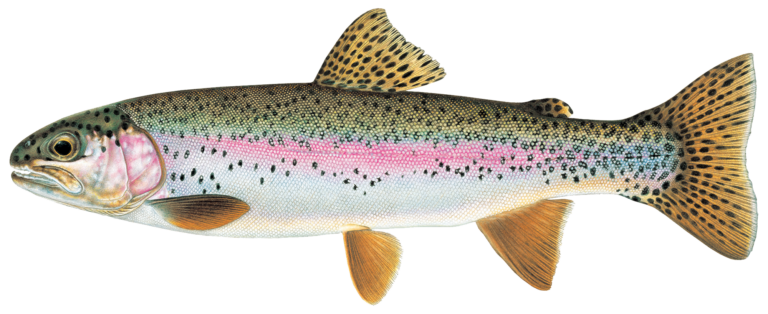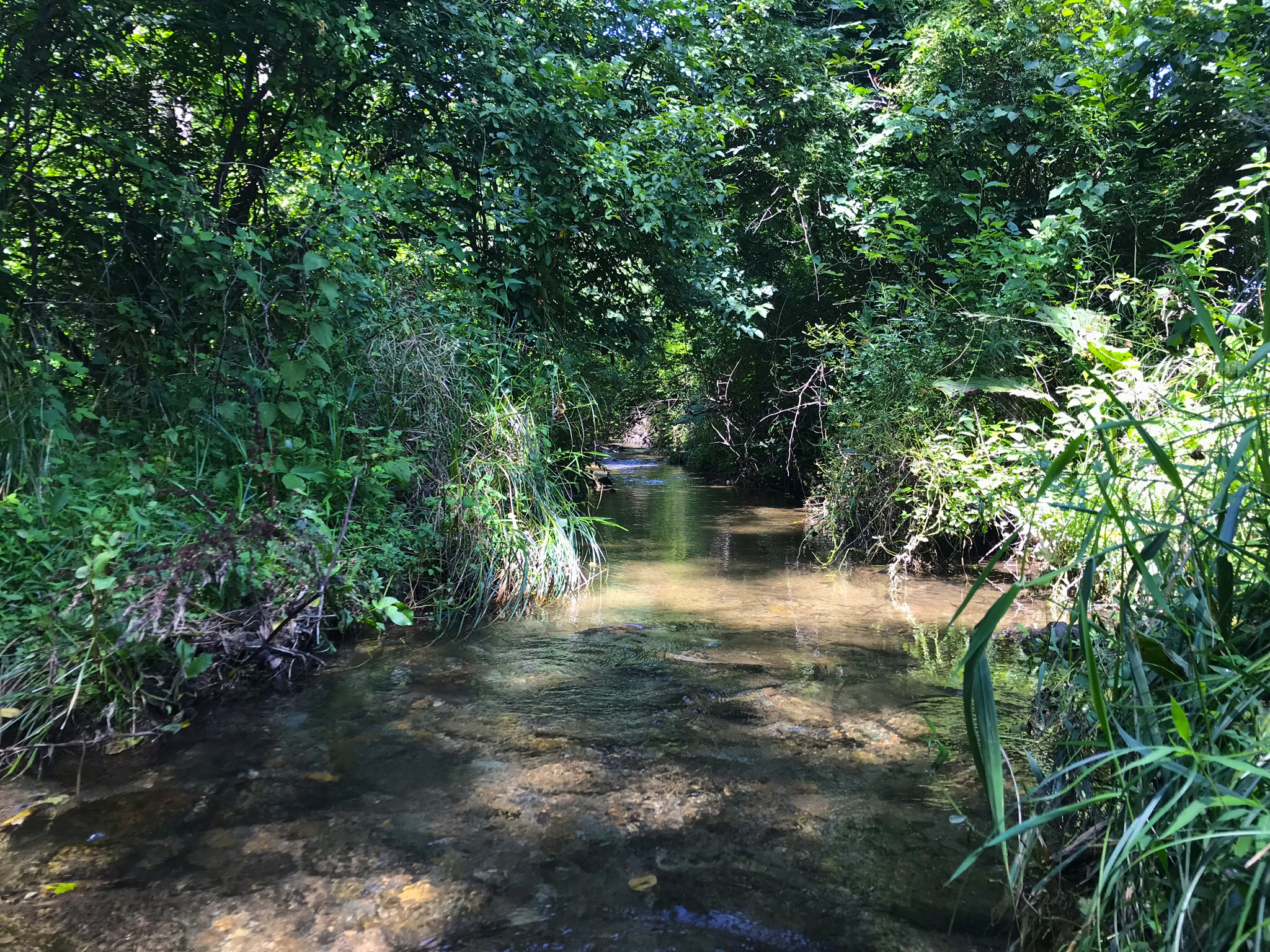Maryland

Overview
Maryland’s mountainous west is crossed by hundreds of miles of streams in surprisingly vast areas of undeveloped forestland. Covering 116 square miles, the upper and lower Savage River watershed is one of Eastern trout fishing’s cathedrals and provides the best opportunity for long-term conservation of native brook trout in Maryland. The North Branch of the Potomac River is a large river system fed by controlled coldwater releases from the dam that holds back Jennings Randolph Lake. A number of its tributaries also harbor wild trout. Several streams on the east slope of the Catoctin contribute to the upper and middle Monocacy trout fishery, a priority for brook trout restoration.
Threats & Opportunities
Because of the relatively low elevation of the upper and middle Monocacy watersheds, warming temperatures from climate change present some risks, though the high level of forestation will provide important protections. With a combination of high elevation and dam-controlled coldwater releases providing cold water in the Savage River and North Branch of the Potomac watersheds, those areas provide an excellent opportunity to reconnect streams and improve in-stream habitat throughout the watersheds.
How We Work
Reconnection
We are building on in-depth analyses and surveys of the region to identify and address problematic fish passage barriers, including small dams and perched culverts. Removing or repairing barriers will allow trout within the system to access important habitat.
Restoration
TU uses a variety of tools, including the Eastern Brook Trout Conservation Portfolio, to prioritize streams where habitat restoration is both most needed and where it will have the most impact and best chance for long-term success. Restoration efforts include stabilizing eroding stream banks, improving riparian health by planting trees, excluding livestock to allow streams to heal themselves, and strategically adding wood habitat.
Wild Trout Recovery
Working with the state, we are identifying streams where wild brook trout have been extirpated and reintroducing native trout.
How You Can Help
Help us survey streams to identify restoration and reconnection needs.
TAKE ACTIONStay up to date about how you can help us care for and recover Maryland’s Priority Waters.
Maryland Conservation Team

Ben Harris
Western Maryland Initiative Manager
ben.harris@tu.org
Western Maryland Initiative Manager
ben.harris@tu.org
Priority Waters
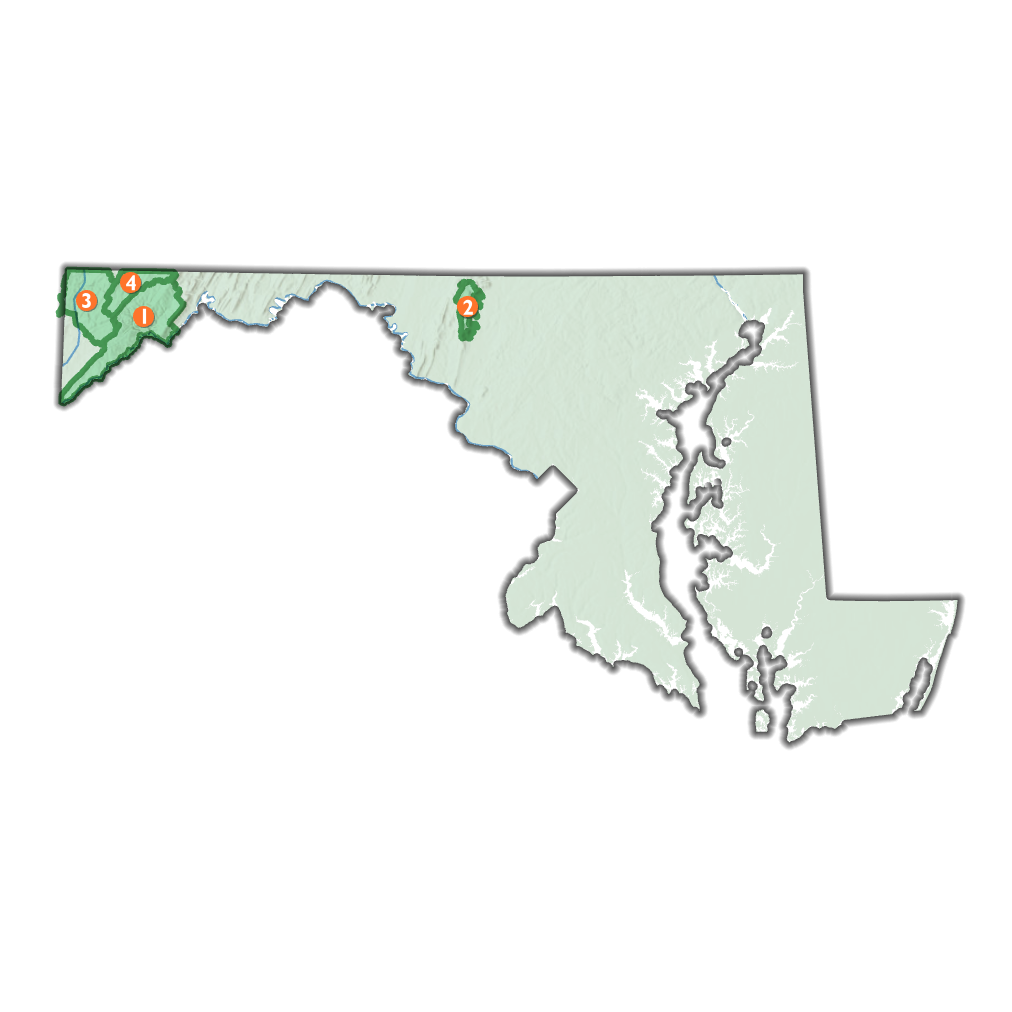
-
Potomac Highlands
The Savage River is Maryland’s premier wild trout fishery, with gurgling streams and cool, picturesque grottos among towering hemlocks. Above the 360-acre Savage River Reservoir, native brook trout populations thrive in nearly every tributary. Biologists have observed extensive movement of wild brook trout within the system, pointing to a population that is using the connected system to seek out the best habitat based on current needs, be it spawning, feeding, or seeking thermal refugia. More than 85 percent of the Savage watershed is forested. The entire upper watershed is managed under catch-and-release, artificial-lures-only regulations. The tailwater below the dam holds both wild brown and rainbow trout. Below Jennings Randolph Lake, the tailwater stretch of the North Branch of the Potomac features approximately 20 miles of adequate coldwater habitat. Wild populations of brown and rainbow trout dominate the river. Several tributaries, including Folly Run and Laurel Run, hold robust populations of wild brook trout. The tailwater below Westernport benefited from the closure of the Luke paper mill in 2019, which has led to even lower water temperatures and improved water quality.
-
East Slope of the Catoctin Mountains
This watershed includes a number of coldwater streams, including Owens Creek, Big Hunting Creek, Little Hunting Creek, Fishing Creek, and Clifford Branch. Two watersheds in the area are priority watersheds for brook trout restoration. The streams contain a mix of native brook trout and wild brown trout, with browns more common at lower elevations. Because the area is almost totally forested, with public ownership helping to ensure it remains so, the area presents an opportunity to improve habitat to make the streams and their trout resilient to warming stream temperatures.
-
Casselman Headwaters
The headwater tributaries and upper sections of the Casselman River include some of the most valued trout resources in the state of Maryland. Starting in the Savage River State Forest in Garrett County, the Casselman flows northward through rural areas and working agricultural land, representing a unique opportunity for TU’s restoration work on a landscape scale. By partnering with local entities such as the Garrett County Natural Resource Conservation Service (NRCS), farm owners, and the local community, TU can enact large-scale restoration projects that benefit both landowners and the coldwater resources central to our mission. TU’s Western Maryland Initiative is engaged directly with landowners to implement agricultural ‘best management practices’ (BMPs) which reduce sediment deposition, lower stream temperature, and improve habitat diversity all while aiding with regulatory compliance for agricultural producers.
-
Youghiogheny Headwaters
The Youghiogheny basin includes the eastern drainage of Backbone Mountain, west of the Continental Divide. Like the Casselman, the Youghiogheny River (or ‘Yough’, for short) drains northward to the Ohio River basin and onto the Gulf of Mexico, rather than the Chesapeake Bay. With headwaters beginning in West Virginia, the Yough flows through Garrett County into Pennsylvania’s Laurel Highlands, hosting some of the best coldwater angling and whitewater recreation opportunities in the eastern United States. Sections of the Yough in Maryland have a legacy of heavy impacts associated with acid mine drainage from abandoned coal mines. The TU Western Maryland Initiative is actively engaged in projects to improve water quality through the Youghiogheny, including acid mine drainage remediation and sediment reduction efforts through riparian tree plantings. With the support of the local community and partnering agencies, TU is writing a new chapter of recovery for the Youghiogheny.

